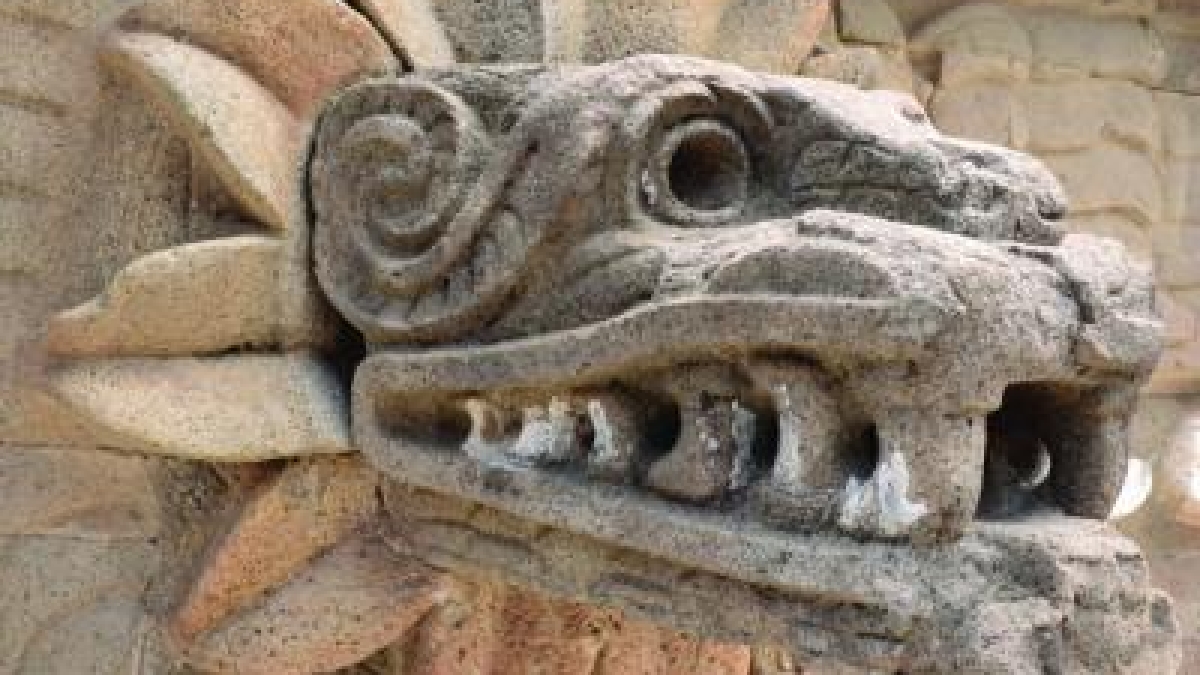Ancient cities series to launch with look at Teotihuacan

Think of a city that holds around 100,000 residents – many in apartment complexes.
Chances are, you didn’t think of ancient Mesoamerica. Yet, in its heyday in the fifth century, Teotihuacan fit the bill, reigning as one of the largest cities on Earth.
Understanding the layout of this city, its political and social foundations, and how its residents built and sustained their metropolis through the centuries is relevant to our modern world. In fact, examining the makeup of ancient urban centers may teach us lessons that will help us create sustainable societies and ways of life.
The Americas’ cities of antiquity are at the heart of a new lecture series at Arizona State University. Since ASU is one of the leaders in Teotihuacan studies, the ruined city just northeast of Mexico City seems like a natural launching pad.
ASU boasts two particular treasures related to the site: the Teotihuacan Research Laboratory and the lab’s director and world-renowned Teotihuacan scholar, George Cowgill.
Cowgill will be giving the initial lecture in the series, “Teotihuacan: Researching Ancient City Life in Central Mexico.”
With more than four decades of work regarding the site, Cowgill’s name is nearly synonymous with Teotihuacan studies. He is such a driving force in the field that an international conference sponsored by Mexico’s National Institute of Anthropology and History was dedicated to him in 2011.
In the 1960s, Cowgill worked with well-known archaeologist René Millon on an immense project that mapped the entire city and catalogued the surface collection of around a million artifacts into one of the first large-scale archaeological databases.
A couple of decades later, Cowgill was responsible for bringing the Teotihuacan Research Lab into ASU’s oversight. The facility, located near Teotihuacan, is the base for numerous research projects of international scholars and institutions, and also an archive for artifacts and academic materials. It is managed by the School of Human Evolution and Social Change in the College of Liberal Arts and Sciences.
Over the years, Cowgill has been part of some impressive finds as well as less dramatic ones. He notes that “the great pyramids, the haunts of rulers and high priests, are important, but the dwellings of ordinary folk are also vital for understanding a complex urban society.”
His upcoming lecture will focus on everyday life in Teotihuacan and ASU’s role in teasing out the mysteries that the ancient ruins hold.
The “City Life in the Ancient Americas” lecture series coincides with the current ASU Museum of Anthropology exhibit. “City Life: Experiencing the World of Teotihuacan” is an immersive event that involved 10 years of planning and preparation, and includes loaned Teotihuacan artifacts from a number of the nation’s major museums. Cowgill’s research and participation were essential to bringing the exhibit to life.
The museum will be open following Cowgill’s lecture at 6 p.m., Jan. 23, in Wrigley Hall 101. Attendees are invited to visit and see mural fragments, jewelry, ceremonial vessels and other artifacts from Teotihuacan. The museum’s entrance is located off the lobby of the School of Human Evolution and Social Change (SHESC) building.
For those interested in getting to know Teotihuacan better, this October, ASU will sponsor a first-class tour to the ancient site, guided by noted Mesoamerican archaeologist Ben Nelson and paleoanthropologist and Institute of Human Origins founder Don Johanson. The trip will include a special tour of the Templo Mayor site in Mexico City, visits to museums and a personal tour of the ASU Teotihuacan Research Laboratory. Contact Julie Russ for more information.